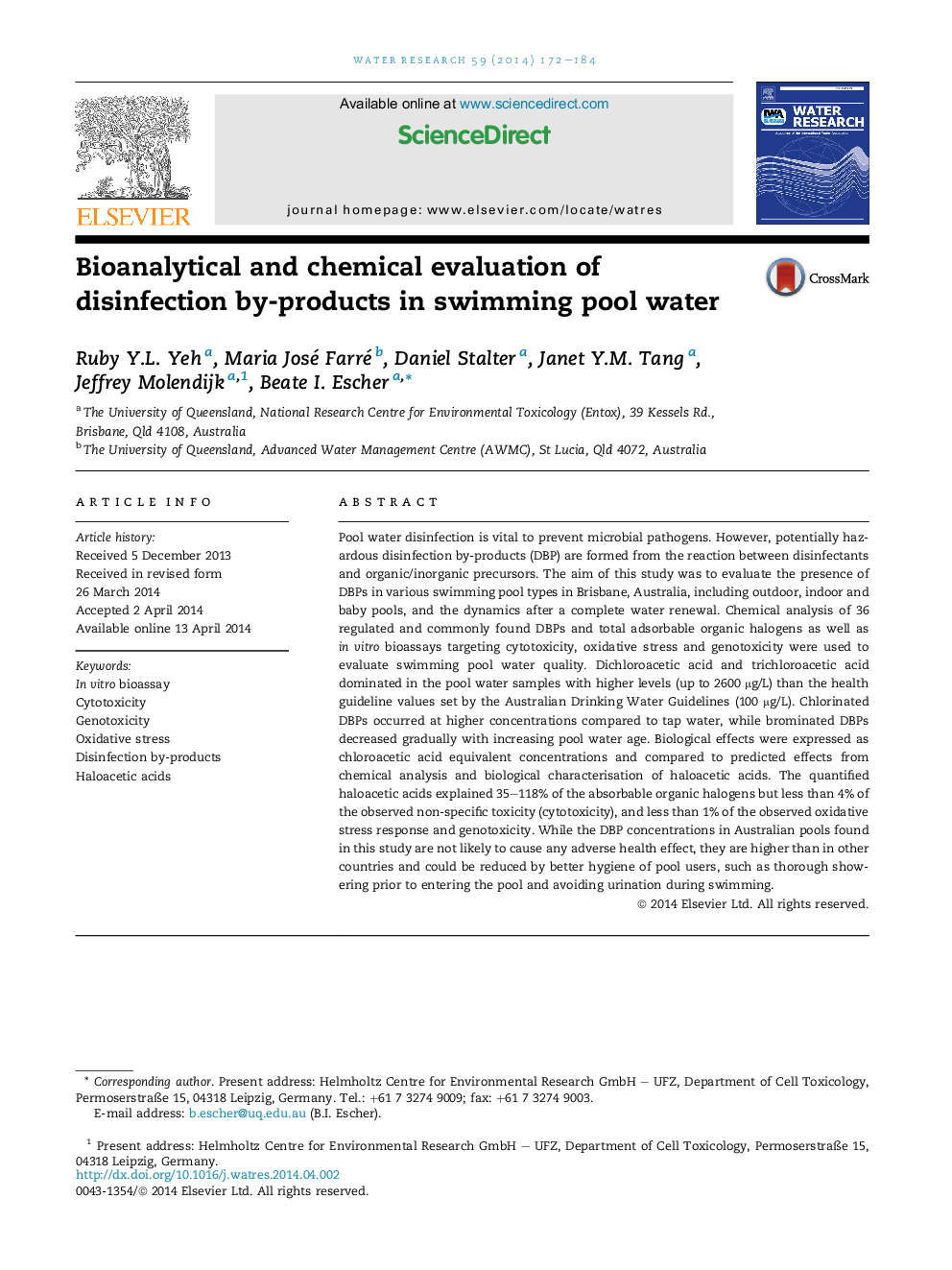| Article ID | Journal | Published Year | Pages | File Type |
|---|---|---|---|---|
| 4481537 | Water Research | 2014 | 13 Pages |
•Combination of DBP quantification and bioassays in swimming pool water.•Increasing load of total nitrogen related to swimmers' activity.•35–118% of total organic halogens were explained by haloacetic acids.•Haloacetic acids serve as good indicators for chemical pool water quality.•Nevertheless, haloacetic acids accounted for less than 4% of biological effect.
Pool water disinfection is vital to prevent microbial pathogens. However, potentially hazardous disinfection by-products (DBP) are formed from the reaction between disinfectants and organic/inorganic precursors. The aim of this study was to evaluate the presence of DBPs in various swimming pool types in Brisbane, Australia, including outdoor, indoor and baby pools, and the dynamics after a complete water renewal. Chemical analysis of 36 regulated and commonly found DBPs and total adsorbable organic halogens as well as in vitro bioassays targeting cytotoxicity, oxidative stress and genotoxicity were used to evaluate swimming pool water quality. Dichloroacetic acid and trichloroacetic acid dominated in the pool water samples with higher levels (up to 2600 μg/L) than the health guideline values set by the Australian Drinking Water Guidelines (100 μg/L). Chlorinated DBPs occurred at higher concentrations compared to tap water, while brominated DBPs decreased gradually with increasing pool water age. Biological effects were expressed as chloroacetic acid equivalent concentrations and compared to predicted effects from chemical analysis and biological characterisation of haloacetic acids. The quantified haloacetic acids explained 35–118% of the absorbable organic halogens but less than 4% of the observed non-specific toxicity (cytotoxicity), and less than 1% of the observed oxidative stress response and genotoxicity. While the DBP concentrations in Australian pools found in this study are not likely to cause any adverse health effect, they are higher than in other countries and could be reduced by better hygiene of pool users, such as thorough showering prior to entering the pool and avoiding urination during swimming.
Graphical abstractFigure optionsDownload full-size imageDownload high-quality image (320 K)Download as PowerPoint slide
